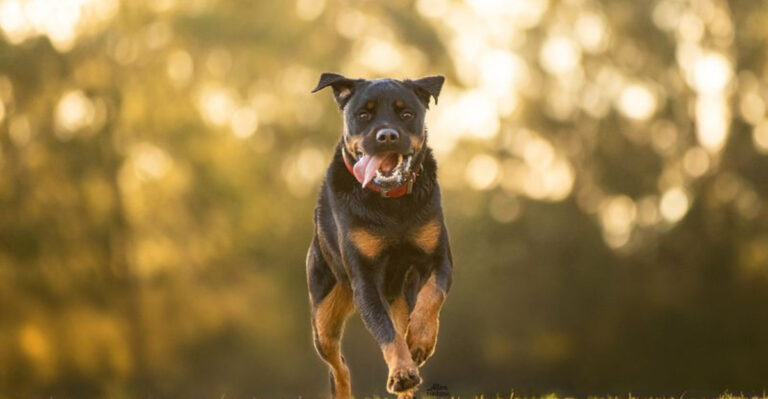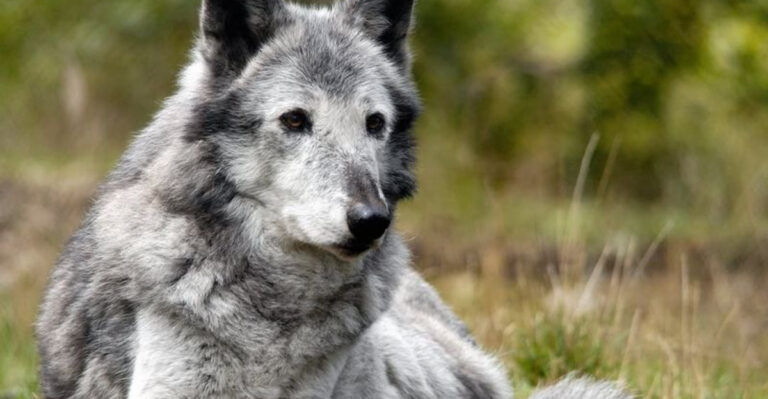13 Interesting Facts About Cheetahs That Would Even Impress A Cat
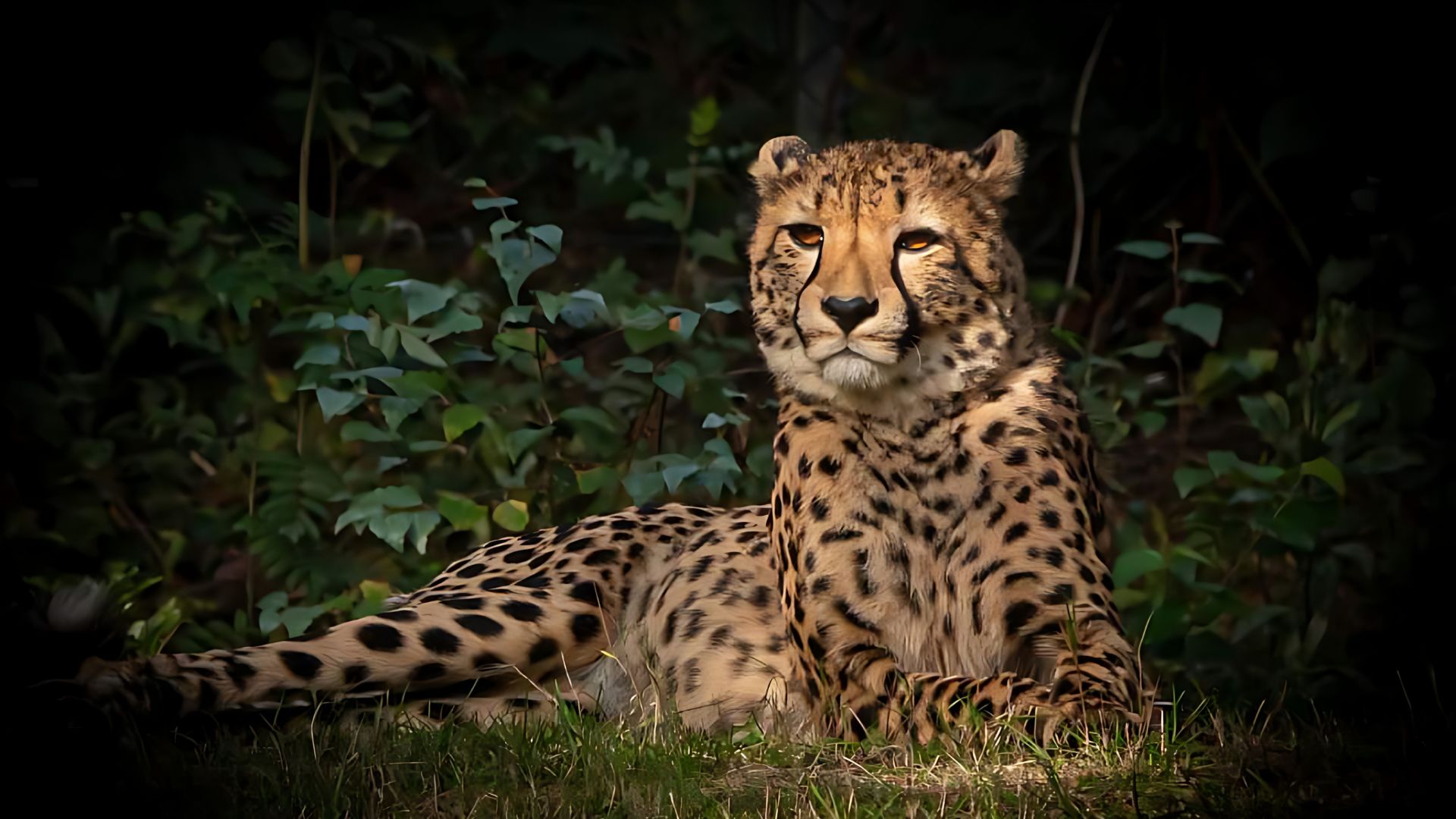
The cheetah is not just the fastest animal on land; it is a marvel of nature with a plethora of intriguing characteristics. From its unique physiology to its social behavior, the cheetah’s attributes are as fascinating as they are diverse.
Let’s see some captivating facts about these incredible creatures, each one showcasing different aspects that contribute to their uniqueness. Whether you’re an animal enthusiast or just curious, you’re sure to find these tidbits both informative and entertaining.
1. The Speedster
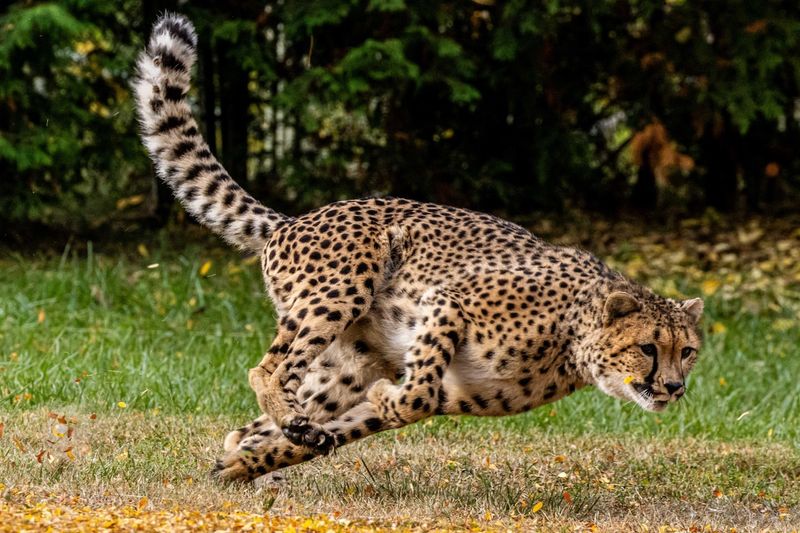
Cheetahs are renowned as the fastest land animals, reaching speeds of up to 60-70 miles per hour in short bursts covering distances up to 1,500 feet. Their acceleration is unparalleled, going from 0 to 60 miles per hour in just a few seconds.
This incredible speed is made possible by their lightweight frame, long legs, and specialized muscles. However, cheetahs can only maintain such speeds for a short time due to the immense energy expenditure. Unlike other big cats, cheetahs rely on their exceptional speed to catch prey, rather than strength or stealth.
Their distinctive black tear stripes help reduce glare and focus better on prey during high-speed chases. While speed is their ultimate weapon, it also makes them vulnerable, as they need to rest after a chase, leaving them exposed to other predators. Cheetahs’ hunting methods are a combination of speed and skill, often requiring strategic planning and timing.
Watching a cheetah in full sprint is witnessing nature’s perfect design for speed, a sight both thrilling and awe-inspiring. These magnificent creatures are not just sprinters; they’re a symphony of grace, agility, and precision.
2. Unique Spot Pattern
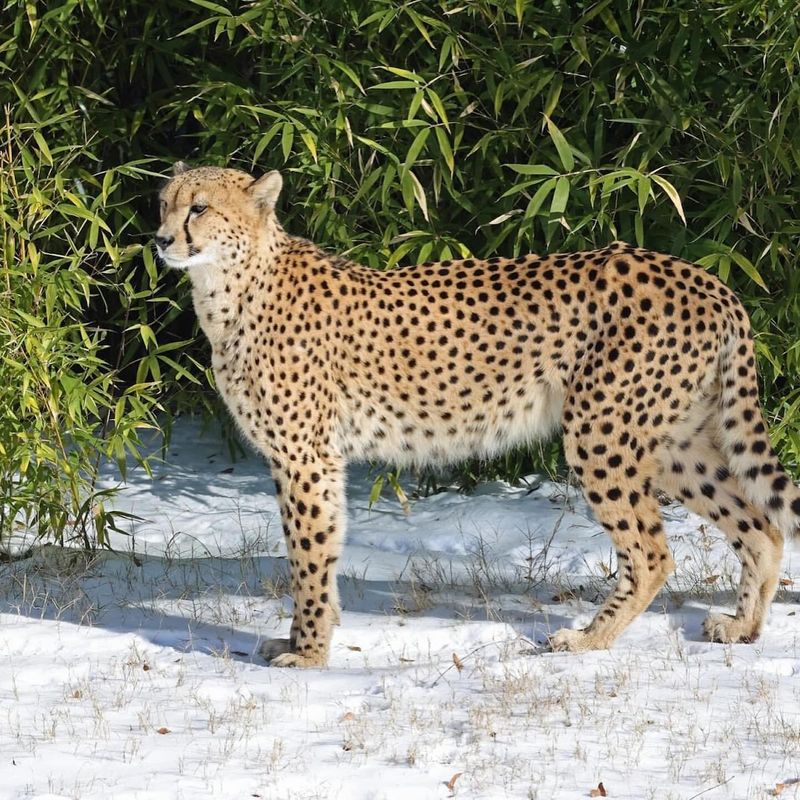
Each cheetah has a unique pattern of spots, similar to human fingerprints. These spots are not just for show; they play a crucial role in camouflage. The black spots on a tawny background help break up the outline of the animal, making it less visible in the grasslands.
This natural camouflage is essential for both hunting and hiding from other predators. Interestingly, cheetah cubs are born with a mane of fur along their back, which helps them blend into tall grass and resemble the fierce honey badger as a deterrent.
The distinctiveness of their spots also aids researchers in tracking and studying individual cheetahs in the wild. Beyond aesthetics, the spots on a cheetah are part of a complex system that allows these animals to adapt to their environment.
Each spot and pattern tells a story of evolution, survival, and adaptation. The beauty of a cheetah’s coat is more than skin deep; it is a testament to nature’s artistry and evolutionary prowess. Whether seen up close or from a distance, a cheetah’s spots are a mesmerizing aspect of their biology, contributing to their allure and mystique.
3. Remarkable Acceleration
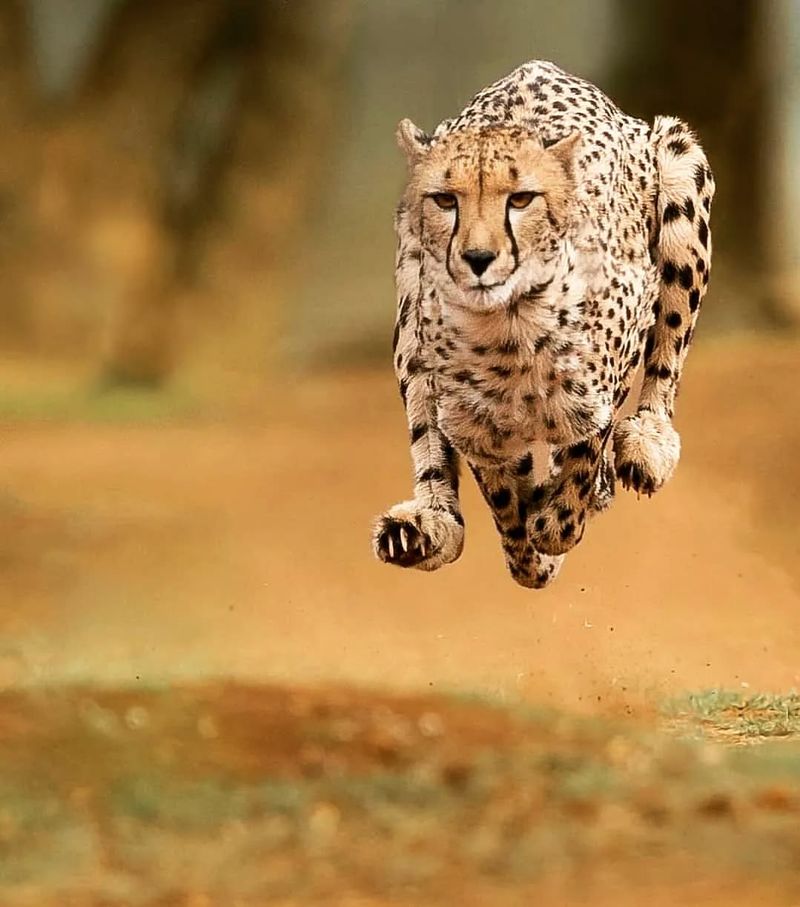
Acceleration is what sets cheetahs apart from other fast animals. They can accelerate from 0 to 60 miles per hour faster than most sports cars, which is a testament to their extraordinary design. This rapid acceleration is facilitated by their powerful hind legs and flexible spine, allowing for an expansive stride.
With each stride covering an impressive 20 to 25 feet, cheetahs are built for explosive speed rather than long-distance pursuit. Their tail acts as a rudder, providing balance and steering during high-speed chases.
Despite their incredible acceleration, cheetahs must be cautious about energy expenditure, as their burst of speed can leave them exhausted and vulnerable. During a chase, a cheetah’s respiratory rate increases dramatically, allowing more oxygen to fuel their muscles.
The combination of rapid acceleration and strategic hunting tactics makes them formidable predators on the African plains. It’s not just about being fast; it’s about knowing when to strike and how to pace themselves for the kill. The sheer power and agility exhibited by cheetahs during a chase is a marvel of evolutionary engineering, showcasing the heights of nature’s ingenuity.
4. Social Cats
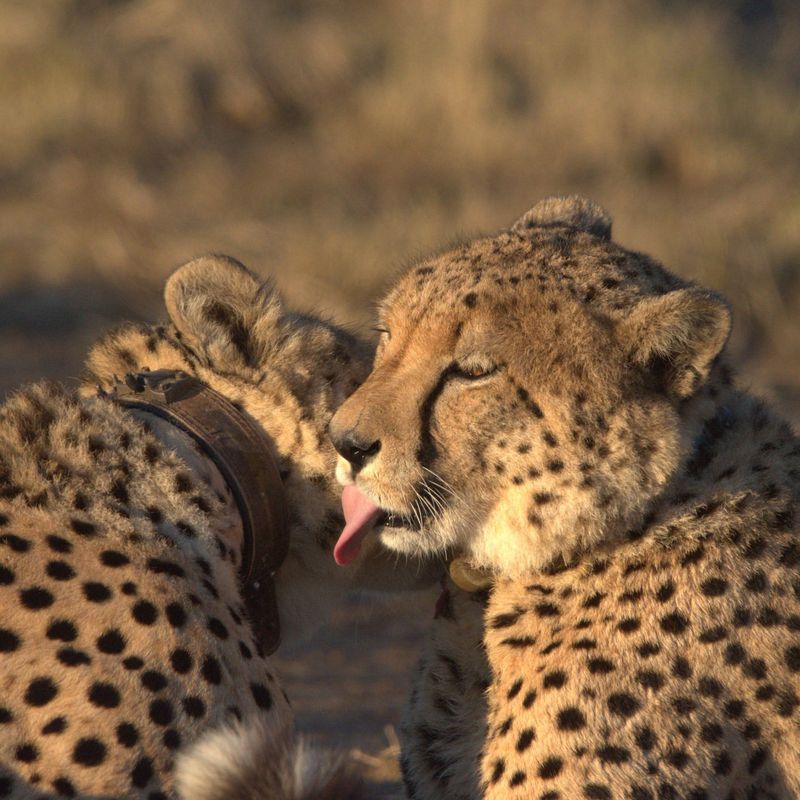
While cheetahs are often thought of as solitary animals, they exhibit a fascinating social structure, particularly males. Male cheetahs, usually siblings, form small groups called coalitions, which can enhance their hunting success and provide protection against other predators.
These coalitions are unique among big cats and demonstrate a level of social interaction not commonly associated with cheetahs. Female cheetahs, on the other hand, tend to be more solitary, except when raising their cubs.
The bond between brothers in a coalition is strong, often lasting a lifetime. This social structure highlights the adaptability and intelligence of cheetahs, as working together can increase their chances of survival. Within a coalition, cheetahs can defend larger territories and share the spoils of their hunts.
Observing these social dynamics offers insight into the complex lives of cheetahs, showing that they are not just speedsters but also creatures with intricate social networks. Whether lounging under a tree or on the prowl, the social life of cheetahs adds another layer to their captivating existence. These social bonds are a testament to the cheetah’s versatility and resilience in the wild.
5. Cheetah Cubs
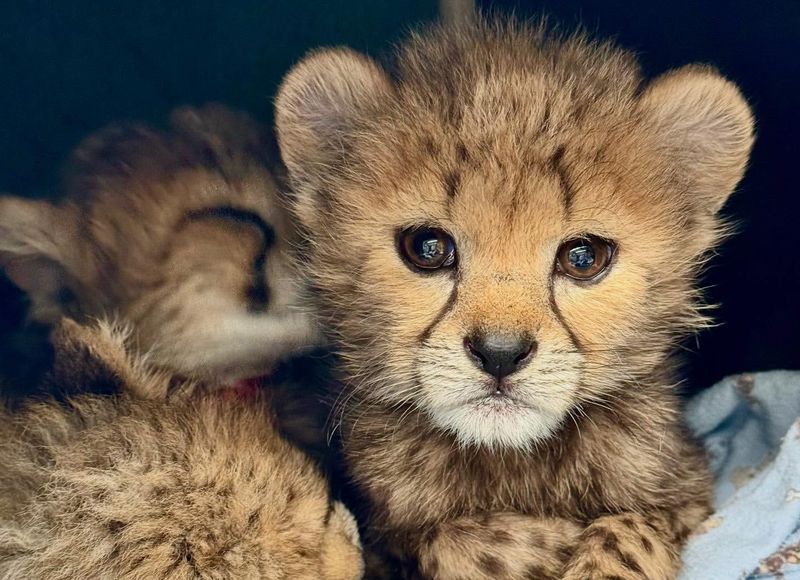
Cheetah cubs are the epitome of cuteness, yet their early life is fraught with challenges. Born in litters of up to eight, the cubs are initially blind and completely dependent on their mother. The first few weeks are critical, as the mother must balance hunting with protecting her vulnerable young from predators.
Cheetah mothers are remarkably dedicated, often moving their cubs to new locations to avoid detection by predators. The cubs’ long, gray fur helps them blend into the grass and resemble a honey badger, offering some protection through mimicry.
As they grow, cheetah cubs engage in play that hones their hunting skills and strengthens their coordination. This playful behavior is crucial for their development, preparing them for the challenges of adulthood. Sadly, the mortality rate for cheetah cubs is high, with many falling prey to lions, hyenas, and other threats.
Despite these odds, cheetah mothers continue to defy the challenges, raising their cubs with resilience and dedication. Watching cheetah cubs play is a delightful sight, showcasing the joy and innocence of youth in the animal kingdom. The tender relationship between a mother and her cubs is a poignant reminder of the struggle and beauty of life in the wild.
6. Vocal Communication
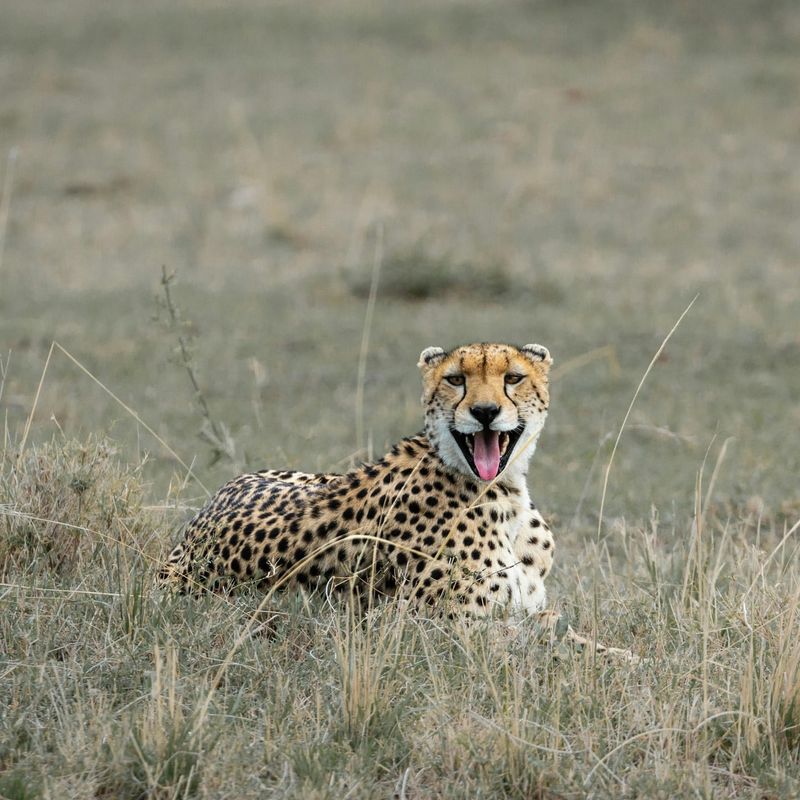
Unlike other big cats, cheetahs cannot roar; instead, they communicate through a variety of vocalizations, including purrs, chirps, and growls. The chirping sound, often used by mothers to call their cubs or members of a coalition to locate each other, is particularly distinctive.
This vocal communication is crucial for maintaining social bonds and coordinating group activities. Cheetahs also purr when content, much like domestic cats, creating a comforting and familiar sound. Their vocal repertoire is surprisingly diverse, covering a range of social interactions from amicable greetings to warnings.
The ability to produce such varied sounds highlights the cheetah’s social nature and adaptability. These vocalizations are not just about communication; they are a vital tool for survival, helping cheetahs maintain cohesion and cooperation within groups.
Listening to a cheetah’s calls offers insight into their complex social behaviors and the importance of vocal communication in the wild. The melodious yet purposeful sounds of cheetahs add another layer of fascination to these incredible animals, showcasing their uniqueness in the animal kingdom.
7. Habitat And Range
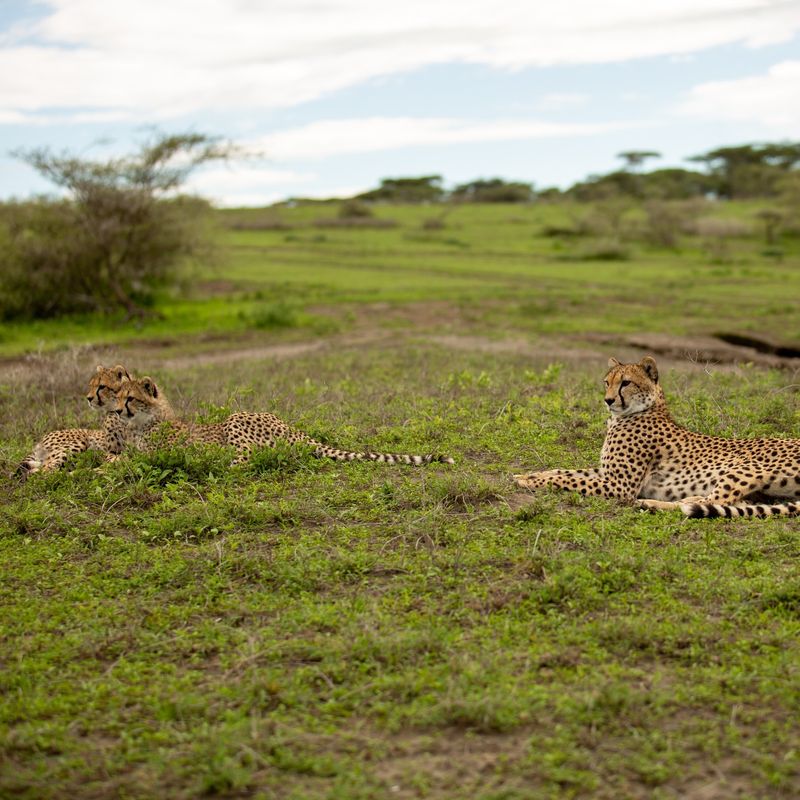
Cheetahs primarily inhabit the vast savannahs of Africa, where open landscapes provide the perfect setting for their high-speed chases. These habitats are characterized by rolling grasslands and scattered acacia trees, offering both hunting grounds and places for rest.
Cheetahs require large territories to support their hunting needs, as each chase expends significant energy. Sadly, their range has significantly diminished due to habitat loss and fragmentation. Conservation efforts are crucial to preserving these environments, ensuring cheetahs have the space they need to thrive.
Historically, cheetahs also roamed parts of Asia, with a small population still surviving in Iran, highlighting their adaptability to different environments. The cheetah’s habitat is not just a backdrop; it is an integral part of their existence, shaping their behavior and lifestyle.
Protecting these habitats is essential for the survival of cheetahs in the wild. The vastness of the savannah is both a playground and a battleground for cheetahs, where survival is a daily challenge. The beauty and majesty of their natural habitat add to the allure of these magnificent creatures, reinforcing the importance of conservation.
8. Sleek And Lightweight
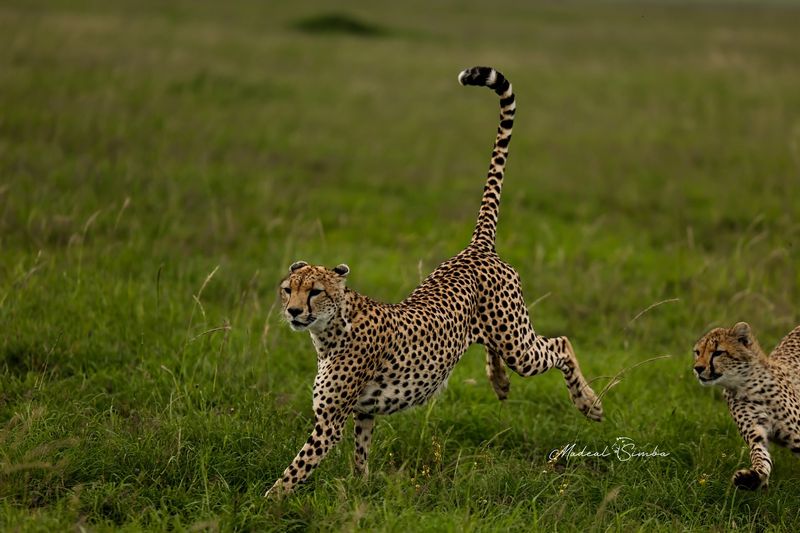
Cheetahs are built for speed, with a sleek, lightweight body that minimizes drag and maximizes agility. Their slender frame, long legs, and small, rounded head all contribute to their aerodynamic profile.
Unlike other big cats, cheetahs lack the bulk and muscle mass, favoring a lightweight build that facilitates their incredible speed. This design is not just about speed; it is about efficiency and precision. A cheetah’s body is a masterclass in evolutionary adaptation, perfectly suited for high-speed pursuits.
Their lightweight form allows them to make sharp turns, crucial for catching agile prey. The cheetah’s physical design is complemented by its non-retractable claws, similar to those of a dog, providing extra grip during sprints. Every aspect of a cheetah’s anatomy is fine-tuned for one purpose: speed.
Observing a cheetah in motion is witnessing the pinnacle of nature’s design, where form meets function. This lightweight build, while perfect for speed, also limits the cheetah’s ability to defend kills against larger predators, adding another layer of complexity to their survival strategy.
The elegance and grace of a cheetah in full stride is a sight to behold, a testament to nature’s ingenuity.
9. Endangered Status
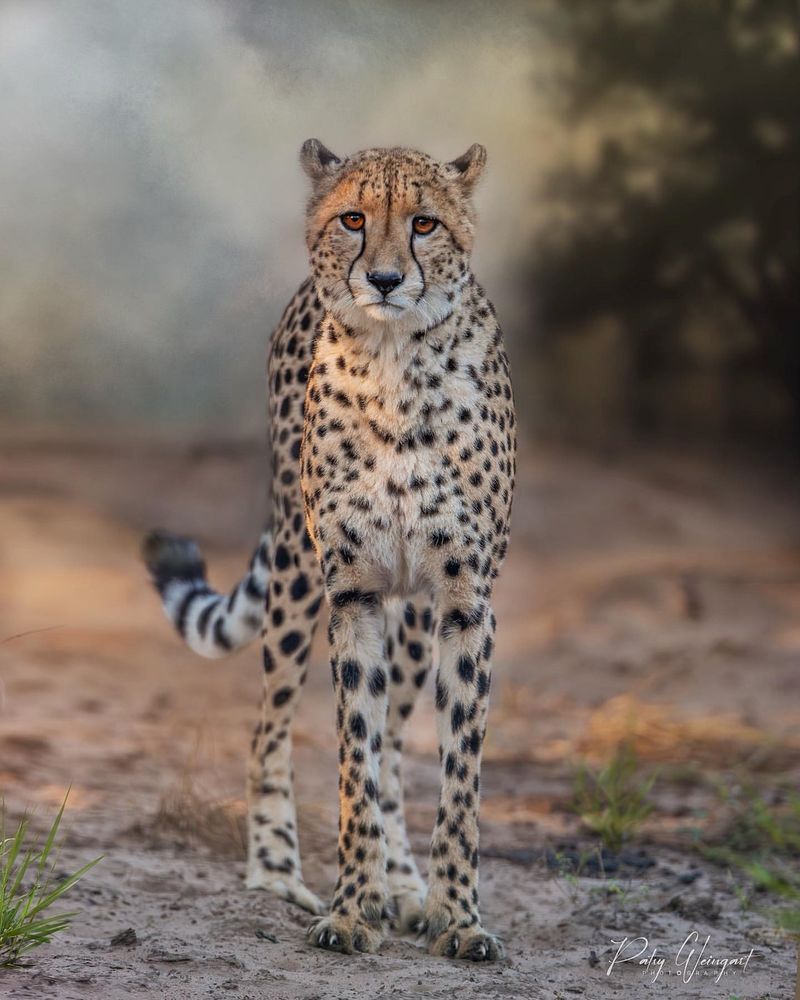
Cheetahs are listed as vulnerable on the IUCN Red List, with their population declining due to habitat loss, human-wildlife conflict, and poaching. Their status as endangered highlights the challenges they face in the wild and the urgent need for conservation efforts.
With fewer than 7,000 individuals left in the wild, cheetahs are on the brink of extinction. Conservationists are working tirelessly to protect their habitats, reduce human-wildlife conflict, and promote breeding programs. The plight of the cheetah serves as a stark reminder of the impact human activities have on wildlife.
Protecting these magnificent animals requires international cooperation and commitment. Raising awareness about the cheetah’s endangered status is crucial for garnering support and funding for conservation initiatives. The cheetah’s struggle for survival is not just about the species itself, but about preserving biodiversity and the ecosystems they inhabit.
Cheetahs symbolize the delicate balance of nature and the importance of conservation in ensuring future generations can witness their beauty and speed. The road to recovery is challenging, but with collective efforts, there is hope for the cheetah’s future in the wild.
10. Hunting Techniques
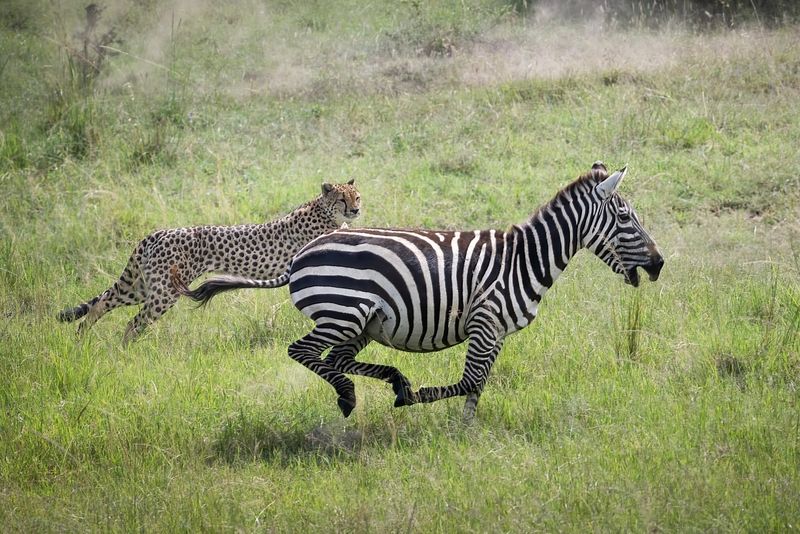
Cheetahs are adept hunters, utilizing a combination of speed, stealth, and strategy to catch prey. Unlike other big cats that rely on ambush, cheetahs prefer open chases in the savannah. Their hunting technique involves stalking prey closely before launching into a high-speed chase, often targeting smaller and faster animals such as antelopes.
The element of surprise is crucial, as cheetahs need to get within striking distance before revealing their presence. Their exceptional eyesight helps them spot prey from a distance, while their agility allows for quick directional changes during the chase.
A cheetah’s hunt is a masterclass in timing and precision, balancing speed with endurance. Once the prey is caught, cheetahs must eat quickly to avoid losing their meal to other predators. Observing a cheetah hunt is an awe-inspiring spectacle, showcasing the blend of instinct, skill, and athleticism.
The thrill of the chase underscores the cheetah’s status as a top predator, despite its vulnerabilities. Each hunt is a testament to the cheetah’s ability to adapt and thrive in the competitive world of the African plains. The art of hunting for a cheetah is a blend of patience and explosive action, a dance that defines their existence.
11. Physical Adaptations
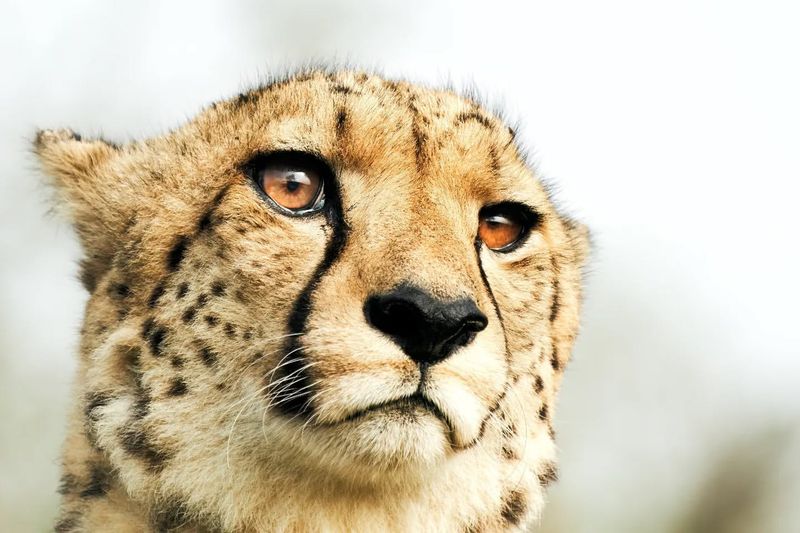
Cheetahs are equipped with several physical adaptations that make them exceptional hunters. Their flexible spine acts like a spring, allowing them to stretch their bodies and cover more ground with each stride.
This flexibility, combined with long legs and a lightweight frame, enables them to achieve their record-breaking speeds. Additionally, cheetahs have enlarged nasal passages and lungs, allowing for increased oxygen intake during high-speed pursuits. Their semi-retractable claws provide traction, similar to cleats, enhancing their grip on the ground.
This specialized anatomy is complemented by their distinctive black tear markings, which reduce glare from the sun and improve focus on prey. These adaptations are not just about speed; they are about precision and efficiency in every movement. The cheetah’s physical traits are a testament to evolutionary ingenuity, honed over millennia to create the ultimate sprinter.
Observing a cheetah in action is witnessing the culmination of these adaptations, each playing a critical role in their survival. The elegance and efficiency of a cheetah’s design are a marvel of nature, showcasing the delicate balance between form and function in the animal kingdom.
12. Lifespan And Longevity
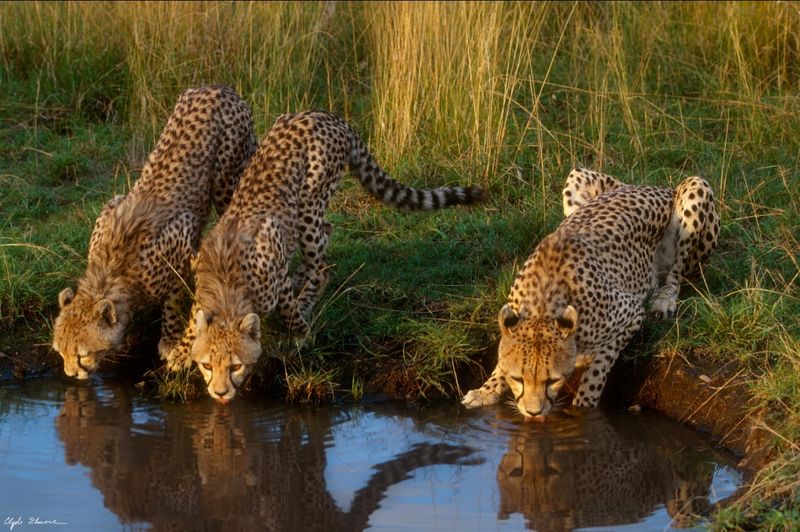
Cheetahs have a shorter lifespan compared to other big cats, typically living around 10 to 12 years in the wild. In captivity, with fewer threats, they can live up to 15 years or more. The challenges of their environment, including predation, competition, and the demands of hunting, contribute to their relatively brief lifespan.
Despite these challenges, cheetahs exhibit remarkable resilience, with older individuals often displaying a regal presence even as age catches up with them. Their longevity is a testament to their ability to adapt and survive in a competitive ecosystem.
Observing an older cheetah is a poignant reminder of the cycle of life in the wild, where every day is a battle for survival. Conservation efforts are vital in ensuring that cheetahs not only survive but thrive into old age, enjoying a life free from the threats of poaching and habitat loss.
The lifespan of a cheetah is a reflection of their adaptability and the harsh realities of life in the wild. As they age, cheetahs continue to contribute to the ecosystem, passing on their genes and wisdom to the next generation. The journey of a cheetah through life is a testament to resilience, adaptability, and the enduring spirit of the wild.
13. Conservation Efforts
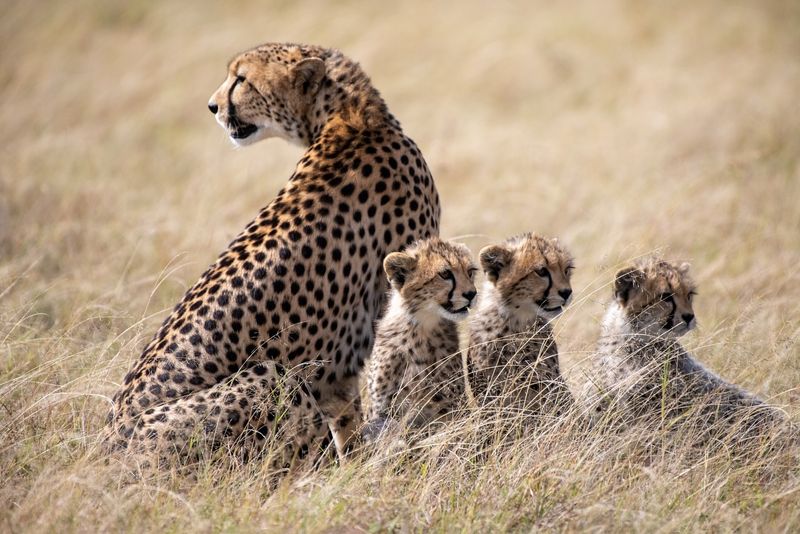
Conservation efforts for cheetahs are crucial in preventing their extinction and ensuring their survival in the wild. Organizations around the world are dedicated to protecting these magnificent animals through habitat preservation, anti-poaching initiatives, and breeding programs.
Tracking and monitoring are essential components of these efforts, allowing researchers to gather data on cheetah populations and their movements. Technology, such as GPS collars, plays a vital role in understanding their behavior and needs. Education and community involvement are also critical, fostering coexistence between humans and cheetahs.
By raising awareness and promoting sustainable land use, conservationists aim to reduce human-wildlife conflict and create environments where cheetahs can thrive. The fight to save the cheetah is not just about the species itself but about preserving biodiversity and the delicate balance of ecosystems.
Every conservation effort is a step toward a future where cheetahs roam freely, their speed and grace a testament to nature’s wonder. The journey to secure their future is long and challenging, but with international cooperation and dedication, there is hope for these incredible animals. The story of cheetah conservation is one of resilience, determination, and the unwavering belief in a better future for wildlife.




